Abstract
We have observed that live macrophages play an obligatory role in transmission of dengue type 2 virus (DV)-induced suppressor signal to a subpopulation of T lymphocytes. The present study was undertaken to resolve whether transmission of the suppressor signal is mediated by a soluble factor or by direct cell-to-cell contact. It was observed that the suppressor factor (SF) remains adsorbed on the surface of macrophages and can be retrieved from them completely by DV-stimulated spleen cells kept in contact with them. Suppression of DV-specific IgM plaque-forming cells (PFC) in spleen-cell cultures does not occur when SF-adsorbed macrophages are separated from them by cell-impermeable membranes. Culture fluid of SF-adsorbed macrophages have no suppressor activity. The suppression of PFC occurs only when SF-adsorbed macrophages remain in contact with DV-stimulated spleen-cell cultures. Thus transmission of suppressor signal from SF-adsorbed macrophages to lymphocytes occurs only by physical contact of the plasma membranes of the interacting cells.
Full text
PDF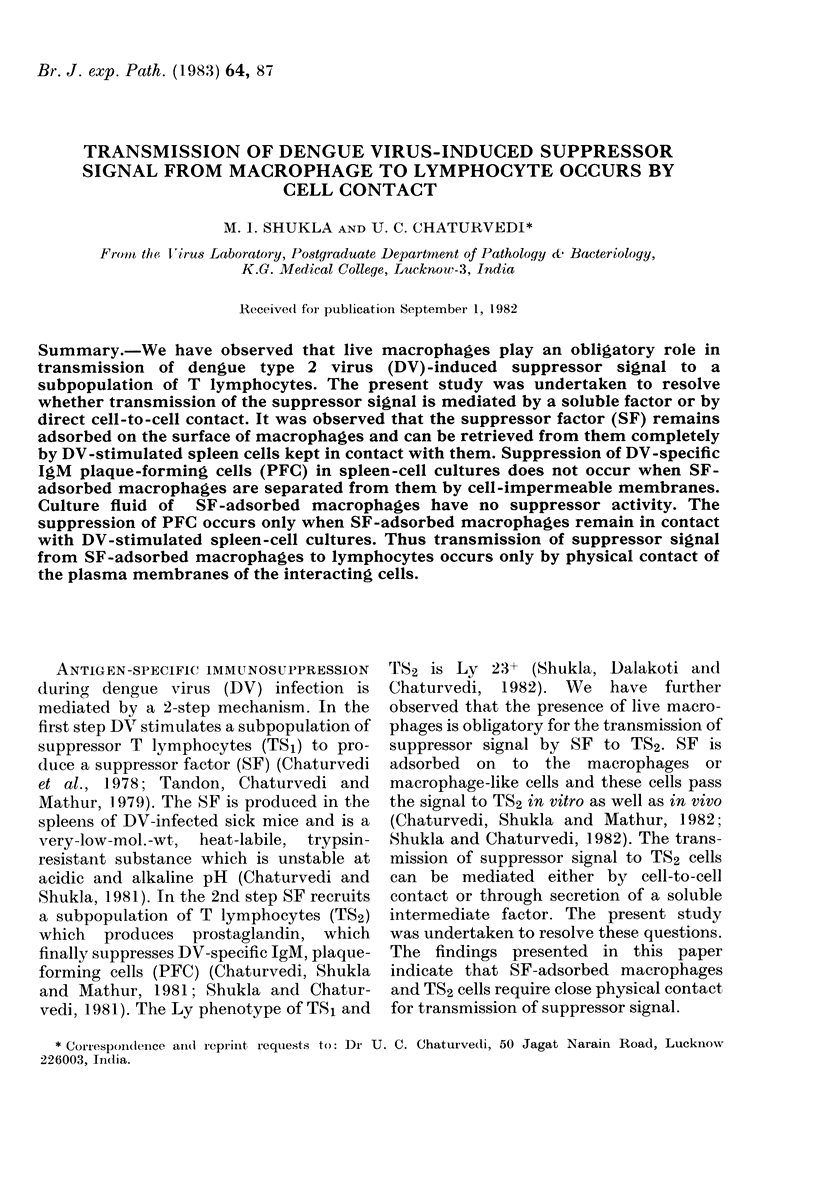
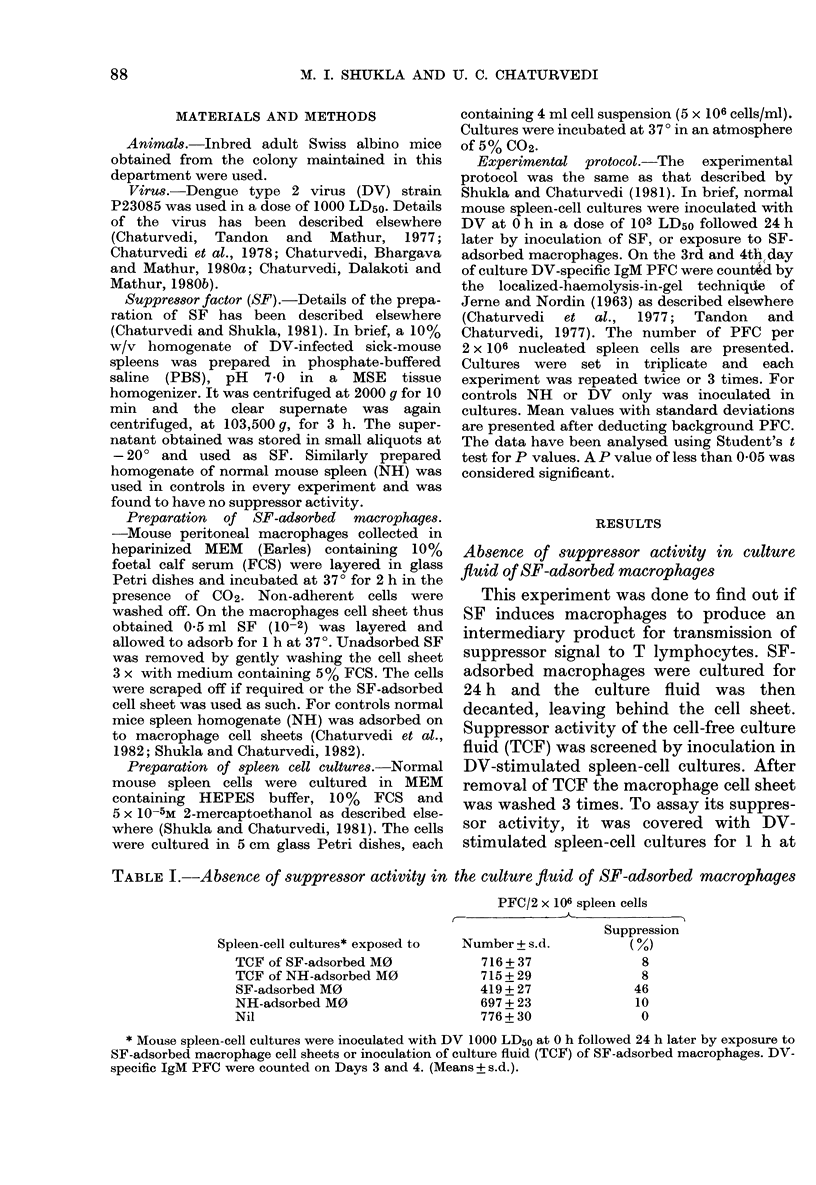
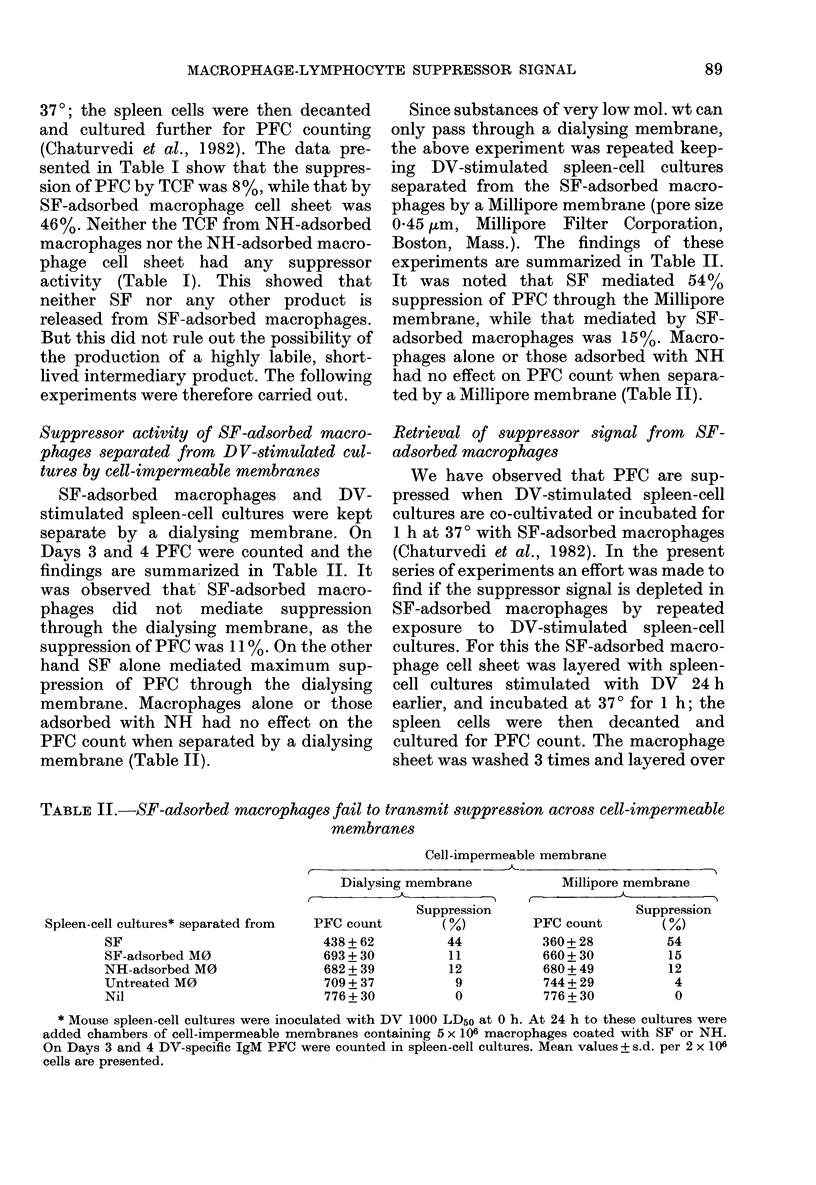
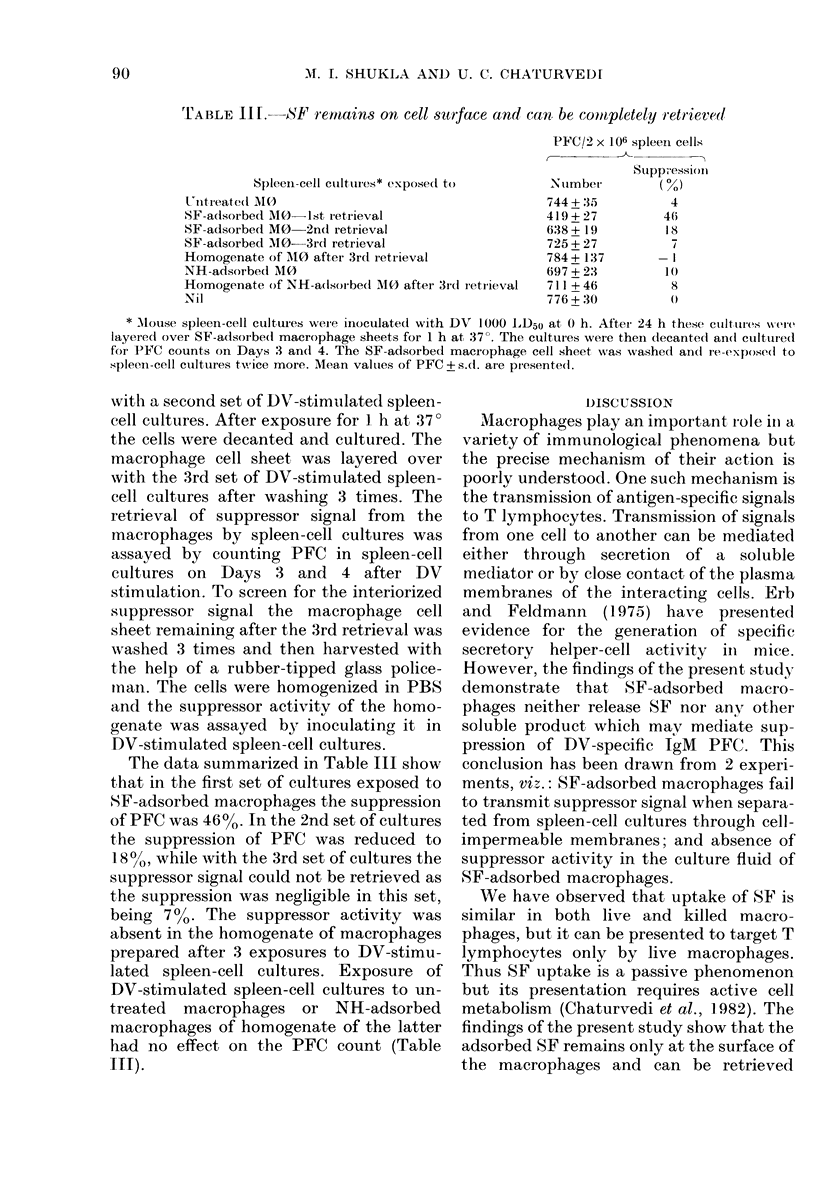
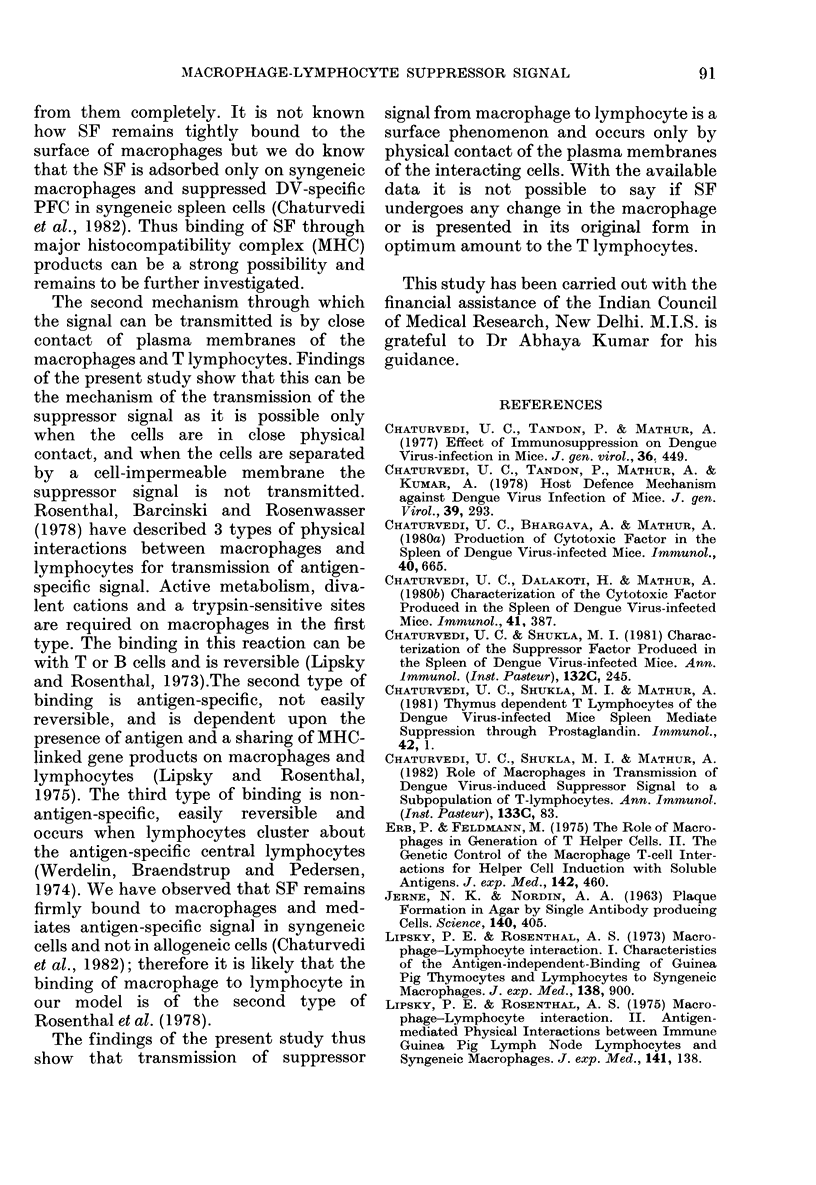
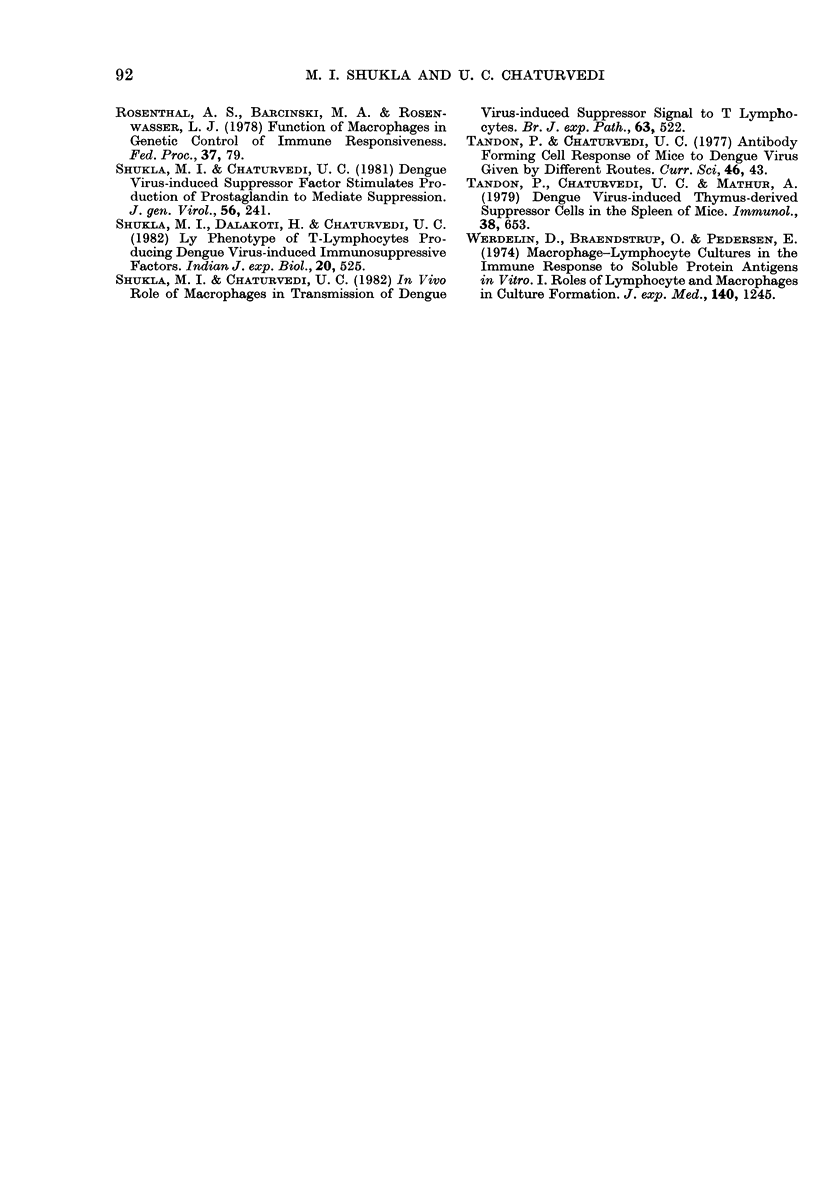
Selected References
These references are in PubMed. This may not be the complete list of references from this article.
- Chaturvedi U. C., Bhargava A., Mathur A. Production of cytotoxic factor in the spleen of dengue virus-infected mice. Immunology. 1980 Aug;40(4):665–671. [PMC free article] [PubMed] [Google Scholar]
- Chaturvedi U. C., Dalakoti H., Mathur A. Characterization of the cytotoxic factor produced in the spleen of dengue virus-infected mice. Immunology. 1980 Oct;41(2):387–392. [PMC free article] [PubMed] [Google Scholar]
- Chaturvedi U. C., Shukla M. I., Mathur A. Thymus-dependent lymphocytes of dengue virus-infected mice spleens mediate suppression through prostaglandin. Immunology. 1981 Jan;42(1):1–6. [PMC free article] [PubMed] [Google Scholar]
- Chaturvedi U. C., Shukla M. I. [Characterization of the suppressor factor produced in the spleen of dengue virus-infected mice]. Ann Immunol (Paris) 1981 May-Jun;132C(3):245–255. doi: 10.1016/0769-2625(81)90075-1. [DOI] [PubMed] [Google Scholar]
- Chaturvedi U. C., Tandon P., Mathur A. Effect of immunosuppression on dengue virus infection in mice. J Gen Virol. 1977 Sep;36(3):449–458. doi: 10.1099/0022-1317-36-3-449. [DOI] [PubMed] [Google Scholar]
- Chaturvedi U. C., Tandon P., Mathur A., Kumar A. Host defence mechanisms against dengue virus infection of mice. J Gen Virol. 1978 May;39(2):293–302. doi: 10.1099/0022-1317-39-2-293. [DOI] [PubMed] [Google Scholar]
- Erb P., Feldmann M. The role of macrophages in the generation of T-helper cells. II. The genetic control of the macrophage-T-cell interaction for helper cell induction with soluble antigens. J Exp Med. 1975 Aug 1;142(2):460–472. doi: 10.1084/jem.142.2.460. [DOI] [PMC free article] [PubMed] [Google Scholar]
- JERNE N. K., NORDIN A. A. Plaque formation in agar by single antibody-producing cells. Science. 1963 Apr 26;140(3565):405–405. [PubMed] [Google Scholar]
- Lipsky P. E., Rosenthal A. S. Macrophage-lymphocyte interaction. I. Characteristics of the antigen-independent-binding of guinea pig thymocytes and lymphocytes to syngeneic macrophages. J Exp Med. 1973 Oct 1;138(4):900–924. doi: 10.1084/jem.138.4.900. [DOI] [PMC free article] [PubMed] [Google Scholar]
- Lipsky P. E., Rosenthal A. S. Macrophage-lymphocyte interaction. II. Antigen-mediated physical interactions between immune guinea pig lymph node lymphocytes and syngeneic macrophages. J Exp Med. 1975 Jan 1;141(1):138–154. doi: 10.1084/jem.141.1.138. [DOI] [PMC free article] [PubMed] [Google Scholar]
- Rosenthal A. S., Barcinski M. A., Rosenwasser L. J. Function of macrophages in genetic control of immune responsiveness. Fed Proc. 1978 Jan;37(1):79–85. [PubMed] [Google Scholar]
- Shukla M. I., Chaturvedi U. C. Dengue virus-induced suppressor factor stimulates production of prostaglandin to mediate suppression. J Gen Virol. 1981 Oct;56(Pt 2):241–249. doi: 10.1099/0022-1317-56-2-241. [DOI] [PubMed] [Google Scholar]
- Shukla M. I., Chaturvedi U. C. In vivo role of macrophages in transmission of dengue virus-induced suppressor signal to T lymphocytes. Br J Exp Pathol. 1982 Oct;63(5):522–530. [PMC free article] [PubMed] [Google Scholar]
- Shukla M. I., Dalakoti H., Chaturvedi U. C. Ly phenotype of T lymphocytes producing dengue virus-induced immunosuppressive factors. Indian J Exp Biol. 1982 Jul;20(7):525–528. [PubMed] [Google Scholar]
- Tandon P., Chaturvedi U. C., Mathur A. Dengue virus-induced thymus-derived suppressor cells in the spleen of mice. Immunology. 1979 Dec;38(4):653–658. [PMC free article] [PubMed] [Google Scholar]
- Werdelin O., Braendstrup O., Pedersen E. Macrophage-lymphocyte clusters in the immune response to soluble protein antigen in vitro. J Exp Med. 1974 Nov 1;140(5):1245–1259. doi: 10.1084/jem.140.5.1245. [DOI] [PMC free article] [PubMed] [Google Scholar]


